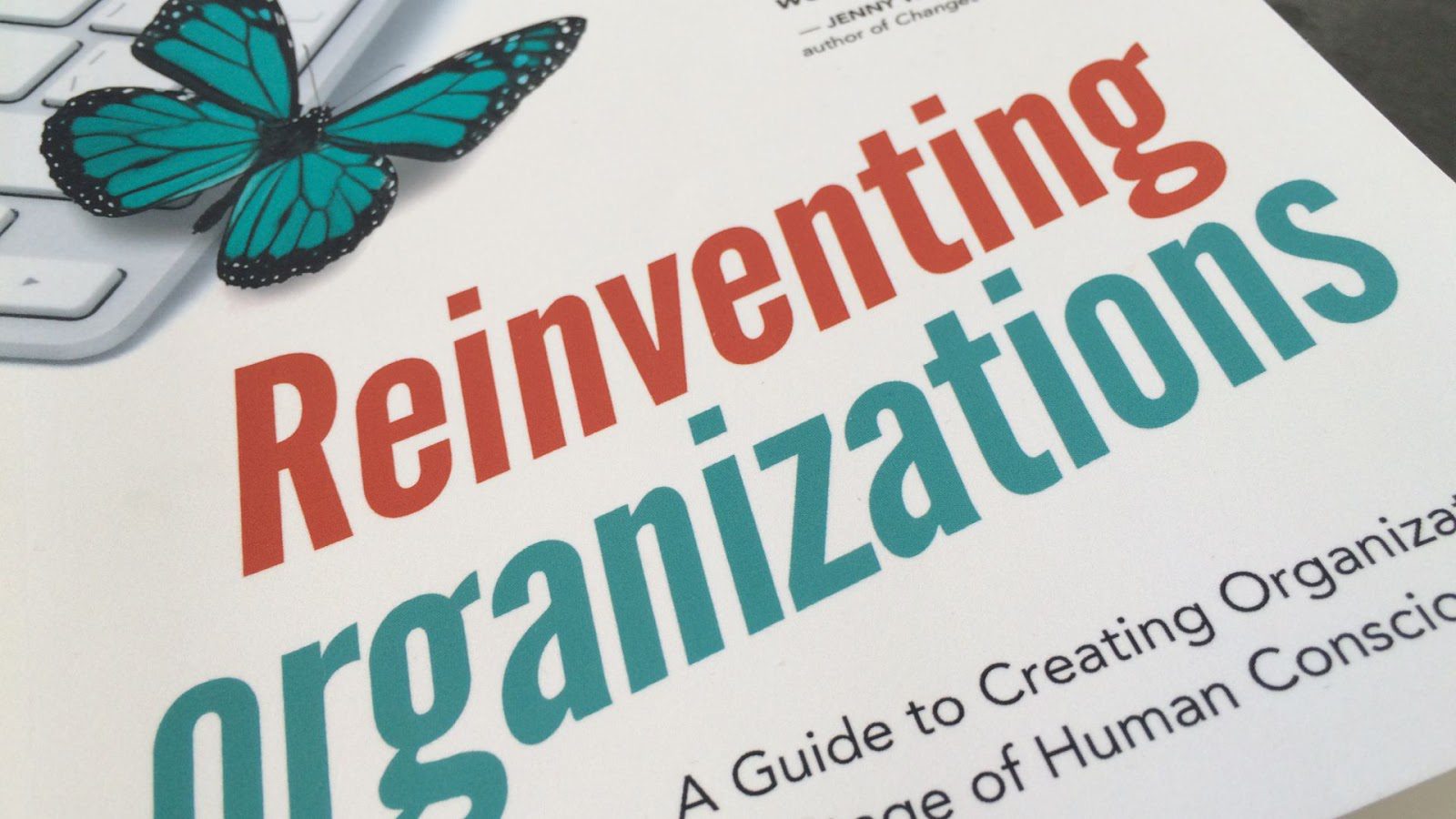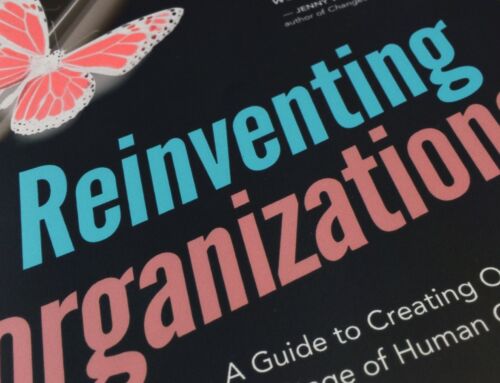The book Reinventing Organizations written by Frederic Laloux was and continues to be a huge inspiration for us at Target Teal. We could not avoid but help with translations and edition of the Brazilian version.
If you haven’t read the book and want to get a grasp of what is about, read the following posts:
- The 5 Stages of Organizational Development by Frederic Laloux
- Three ways for self-management to work
To celebrate the Brazilian edition I want to share a little bit of what we have learned by helping other in their Teal Journey, and perhaps inspire other people and organizations.
Beginning the Reinvention
There is no single way to start a transition to a evolutionary organization, but it seems that the main pre-requisite still is the leader, CEO or Executive Director. The leadership needs to be somewhat committed to the ideias presented in the Laloux’s book. When that does not happen, we as consultants, find ourselves in a trap.
In some cases the manager interest lies on only one breakthrough named by Laloux on Reinventing Organizations – Self-management, wholeness and purpose. Some come to us only interested in the self-management, others only looking to have a clear purpose in their organization. As we see, each element is interdependent of the other. So, one thing leads to another, and and the work evolves to a broader scope.
Once this is settled we usually work with two different approaches. One promotes small changes that can impact the whole organization (Cultural Design) and the other seeks a more general and profound change (O2 Catalyst) that maybe is adopted by part of an organization and then spreads to other areas.
Cultural Design proposes a method to create and validate artifacts that can be practices that are described in Laloux’s book. Therefore the organization makes small steps in their Teal Journey. By dealing with present tensions you open the door to more transformations. It is a gradual, empiric and evolutionary process. Our goal is to teach the organization the method, so we can get out and let them build their own path.
The O2 Catalyst was created from our practice in self-management, inspired by Sociocracy 3.0 and Holacracy. In O2 you can find patterns and practices compiled that have been tested and validated by thousands of organizations. We do not propose that you copy an organizational model. Our intention is to teach a new language and let the practices and culture evolve from this new lexicon.
Usually when the organization is bigger than 30 people, we proposed that a department runs a pilot. Only after that, if it makes sense, we go ahead and disseminate the language to the rest of the organization. We also leave the scene once the organizations feels autonomy to run the learning process without us.
Reinventing People or Organizations?
Two questions usually come up in our work:
- Are people ready to work in a Teal Organization?
- What are the changes and challenges that people face in the transition process?
I understand the concerns about the skills and capacity people have to adapt, but the first question has no relevance for me, when I think:
“It is impossible to learn to swim without getting wet”
If we consider that not all people are ready, we still have to offer a chance for people to practice and learn. And it is only possible to learn by doing. There is high chance that they will need support, but if people are willing to give a try, we should not worry with the first question, but how to best help them.
If they are not willing to try? OK, life goes on, nobody can be forced to learn to swim. In reality they can feel impelled by the environment when it is flooding. This is part of a ever changing world.
The personal challenges depend a lot on the organization and the individual. But we find some scenes and phrases that are common:
- Now that I don’t have a boss to protect and guide my career
- I need to stop looking for consensus before acting and exercise the authority given to me
- I’m having a hard time dealing with the fact that the facilitator has the authority to ask me to stay quiet at certain time during the meeting.
- I need to focus more on present tensions than focus in the future
- My dream has been to be the boss and now it is becoming impossible
So the journey is full of challenges, but there are generous rewards after each obstacule. The feeling of more autonomy and power to impact the organization, to work in an environment where things are clear and transparency is the norm, the satisfaction of work for a purpose and the numerous opportunities available for self development.
Frequently we surprise ourselves, those people that before seem skeptical ou resistant to the methods and practices proposed, they become enthusiasts or even promoters of a new way of working.
Reinventing the CEO
There is a apparent paradox on the idea that evolutionary organizations need leaders and CEOs to engage in the process of process of reinventing the work in way that makes their job obsolete. Are they working towards their own extinction?
There is a different perspective that is important to make it clear. In self-management, we do not want everyone to be equal, we just want everyone to have maximum power and autonomy. The skills and experiences of executives have great value, we just need to reinvent the roles of a CEO.
All of us, regardless of where we stand in an organization, play a number of roles. It’s no different from the CEO. When the organization is in the process of transition, the CEO has to give up some roles and begin to take on others.
We prefer this to be done explicitly, and we see this happen in our clients. For example. Some begin to abandon informal roles of “Budget Approver,” “Goal Setter,” “Responsible for Promotions” and begin to strengthen roles that are now explicit: “Public Face of the Organization,” “Inspiration for New Hires ” and “Guardian of the Vision. ”
In addition people look to the CEO to seek references on how to behave during the transformation process. In other words, one more reason why he is the key in the journey of reinventing organizations.
Conclusion
By reading Laloux’s Reinventing Organizations book, you may get the impression that he speaks of a distant and Utopian world and forget that he is talking about real experiences and companies. He talks about organizations that already exist and practices that have emerged for many years.
It is not so impossible or too complex to learn or apply. Just believe and put effort to be an agent of change.
It was that insight we had when we created Target Teal. Today we continue to experience this everyday and it does not seem like we’re going to stop so soon. Do you want to come with us? Let’s have some coffee!






Leave A Comment